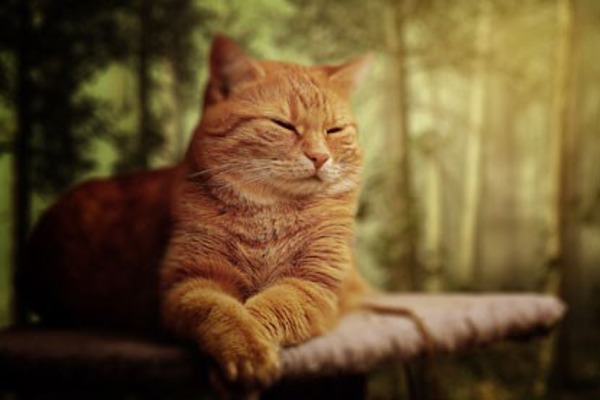Does your cat love you... and do your cats love each other?
This Valentine’s Day many of us will be thinking about those we love – whether it’s romantically, family, friends and even pets.
Our cats are an integral member of the family – inspiring feelings of peace, joy and happiness and providing fun and laughter. The emotional bond between an owner and their pet can be as rewarding as many human relationships and may offer similar psychological benefits.
Many cat owners derive comfort and a renewed sense of well-being by stroking and grooming their cat. Such activities can improve people’s mood, reducing levels of stress hormones and increasing the levels of a variety of feel-good hormones – as well as bringing great enjoyment for your cat too!
Does your cat love you?
A cat’s emotions are not human-based, so understanding their species-specific needs can enhance our own relationship with them and reassure us that our cats like us!
Cats express ‘love’ in their own particular way which differs from other species. They are naturally a solitary animal and have not evolved to seek companionship or affection from others. However, many cats have learned to love the company of people and will often show affection by rubbing up against us for a fuss and a stroke and to place their scent on us. If your cat chooses to engage with you it is probably safe to say that they are fond of you!
The more you understand your cat’s needs and learn about their natural behaviour the more likely it is that you will have a mutually beneficial relationship. For more information, you could browse the Help and advice section of our website, where you'll find information about cats’ health, environmental needs, diet needs and behaviour.
Are your cats friends or foes?
The behaviour of cats is subtle and it’s easy to misread the signs. Domestic cats have evolved from the African wildcat, which is a solitary hunter and didn’t develop the complex facial measures to show a wide variety of expressions. There are signs that cats like each other but also there are signs they are only tolerating each other or not getting on at all.
Signs of cats being the same social group include mutual grooming (known as allogrooming), mutual rubbing (known as allorubbing) and sleeping together touching, often with interlocking paws.
Cat friends

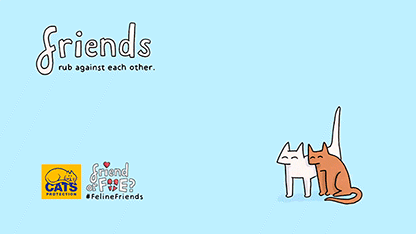
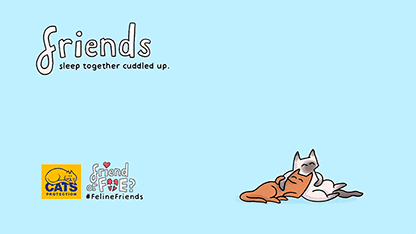
Cats that are ‘friends’ may also choose to spend a lot of time in close proximity, may greet one another with a tail up, touching noses and play fight with each other.
Cat foes
Cats that are not in the same social group will time-share resources like furniture (one cat may use it in the morning and the other cat may use it in the afternoon) and may even live in separate areas/floors of the house.
They might emotionally block access to resources like cat flaps or litter trays and you may see behaviour problems like inappropriate toileting, spraying and aggressive behaviour; and/or recurrent stress-related illnesses such as cystitis, over-grooming and skin conditions.

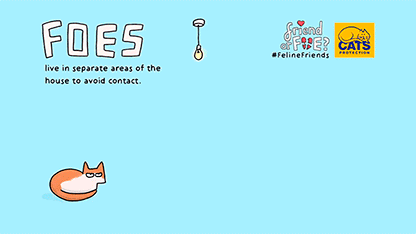
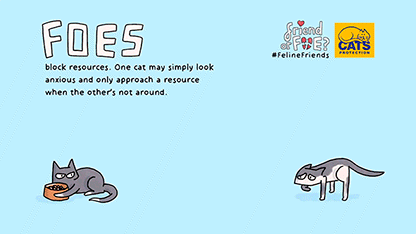
Find out more by reading our social groups blog post.


